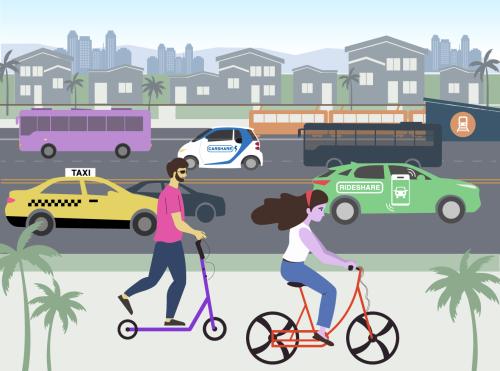Los Angeles UBM Program and Mobility Wallets
Los Angeles County is the most populated county in the United States and hosts one of the largest public transportation systems in the country. The City of Los Angeles and neighboring cities such as Inglewood and Compton contain several communities that are designated as Disadvantaged Communities under Senate Bill (SB) 535, and/or Low-Income Communities under Assembly Bill (AB) 1550, and are home to a large number of transit-dependent households. To address unmet transportation needs and improve transportation equity in the region, the Los Angeles Department of Transportation (LADOT) selected an area of South Los Angeles as the project area for its Universal Basic Mobility (UBM) pilot program. The project area is home to more than 400,000 residents, and 29% of households are below the regional poverty level.

The UBM program is primarily funded by the California Air Resources Board (CARB) Sustainable Transportation Equity Project (STEP) and includes a suite of mobility initiatives such as a Mobility Wallet pilot, an e-bike library, an on-demand community shuttle, and an EV charging network. The Mobility Wallet pilot provides $150 in monthly transportation funds to income-eligible participants on a prepaid debit card for a period of 12 months (beginning in April 2023). The funds can be used for a wide variety of transportation services as defined by eligible debit card merchant codes, including public transit, intercity bus and rail, ridehailing, carsharing and car rentals, shared e-bikes and e-scooters, and bicycle shop purchases.
LADOT partnered with the Los Angeles County Metropolitan Transportation Authority (LA Metro) to administer the Mobility Wallet, and selected 1,000 participants from an application pool of more than 2,200 to receive the prepaid cards. Applicants were primarily recruited from the population of existing members of Low Income Fare is Easy (LIFE), LA Metro's income-qualified low fare program. LA Metro used a random sample stratified by gender and student status to align these characteristics within the participant group with those of the project area population.
Find out more about other pilots:



